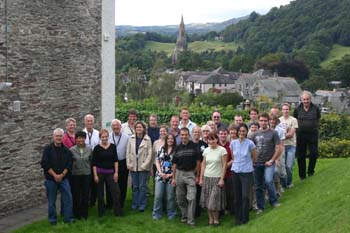NASA Joins Lancaster In Pioneering Space Workshop

A team from Lancaster University joined academics from NASA and the British Antarctic Survey at the first ever international workshop on solar wind streams.
The five day event was held in Ambleside in the Lake District, and was organised by Dr Mick Denton from Lancaster along with colleagues from Los Alamos National Laboratory, the Jet Propulsion Laboratory at NASA, British Antarctic Survey, University of California and University of Newcastle in Australia. The team from Lancaster University also included Dr Andrew Kavanagh, Nicola Longden, Dr Rebecca Seviour and Dr Jim Wild.
The workshop aimed to highlight the current state of knowledge regarding High Speed Solar Wind Streams and their interaction with Geospace - the region beyond the Earth's atmosphere, out through the magnetosphere.
Dr Denton, from the Department of Communication Systems at InfoLab21, has been invited to visit Los Alamos National Laboratory next summer.
He said: “Researchers at Lancaster are among the leaders in this field with numerous publications in the area in the last two years. It was pleasing to be able to attract such renowned international workers in this research area to discuss recent progress, and the outstanding physics questions to focus on in future."
He will now guest edit a special edition of a journal based on the conference.
Dr. Nancy Crooker from Boston University said: “I am sure all participants would agree this was a successful workshop. For me, it was particularly interesting to learn about the latest ideas on magnestospheric processes involved in electron acceleration.”
The magnetosphere is the region of near-space dominated by the Earth's magnetic field and the researchers are interested in the electromagnetic connection between the sun and Earth. Disturbances in this coupling to the Sun - often called "space weather" - can lead to electrically charged particles of solar origin entering the upper layers of the Earth's atmosphere. The most striking natural effects of space weather are the Aurora Borealis of "northern lights" but a large influx of charged particles can damage Earth-orbiting satellites and play havoc with radio communications.
The next international conference will be held in Ambleside in two years’ time.